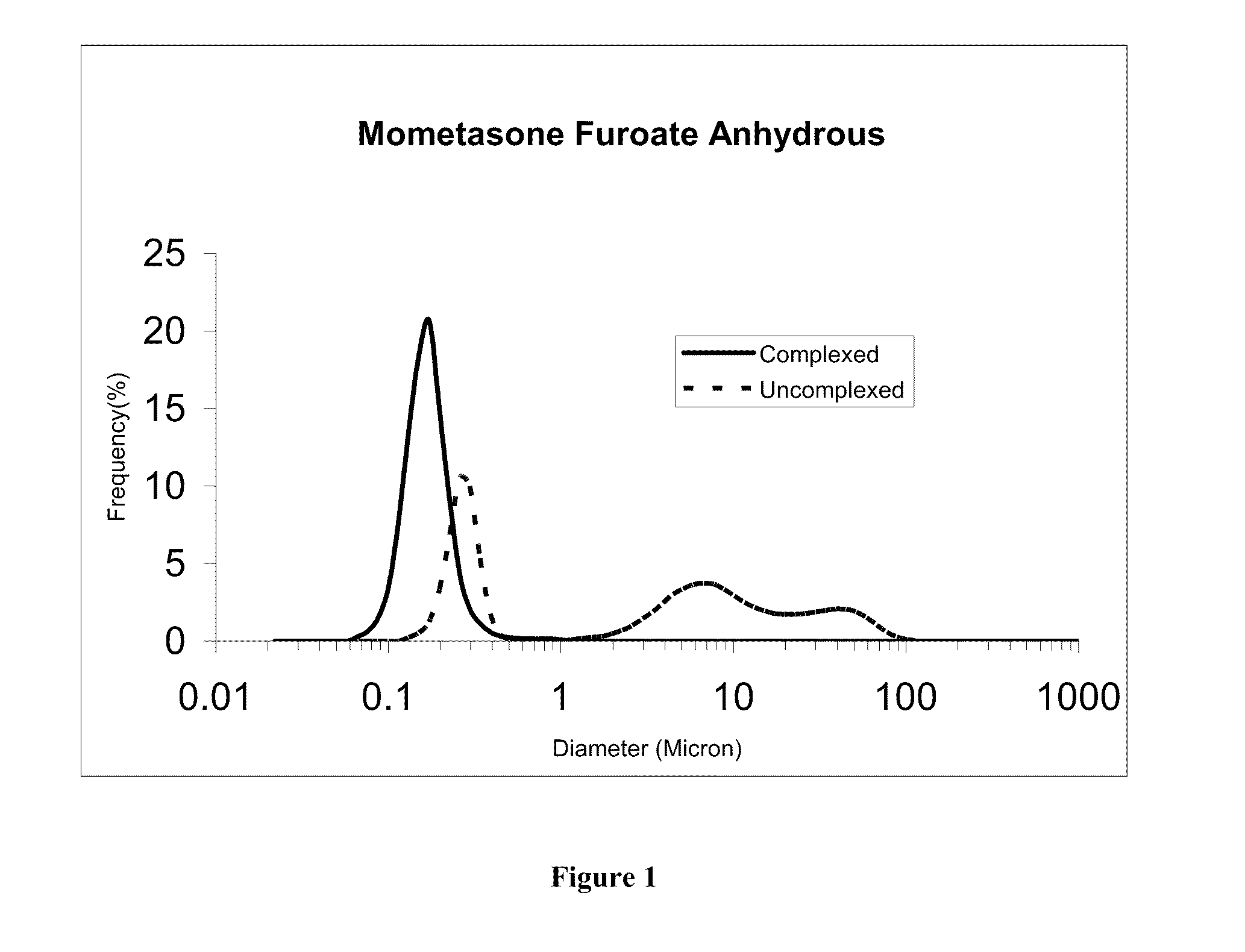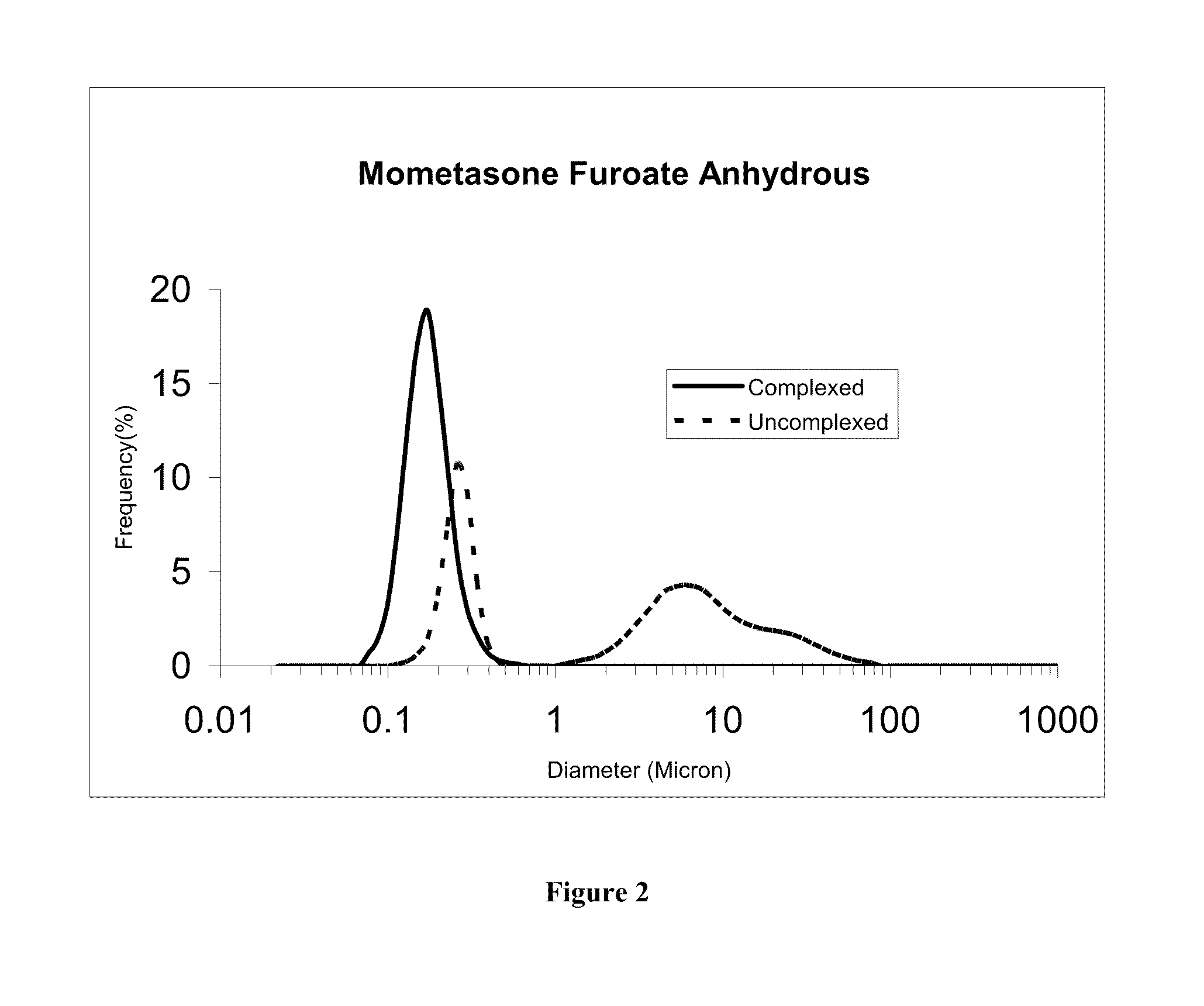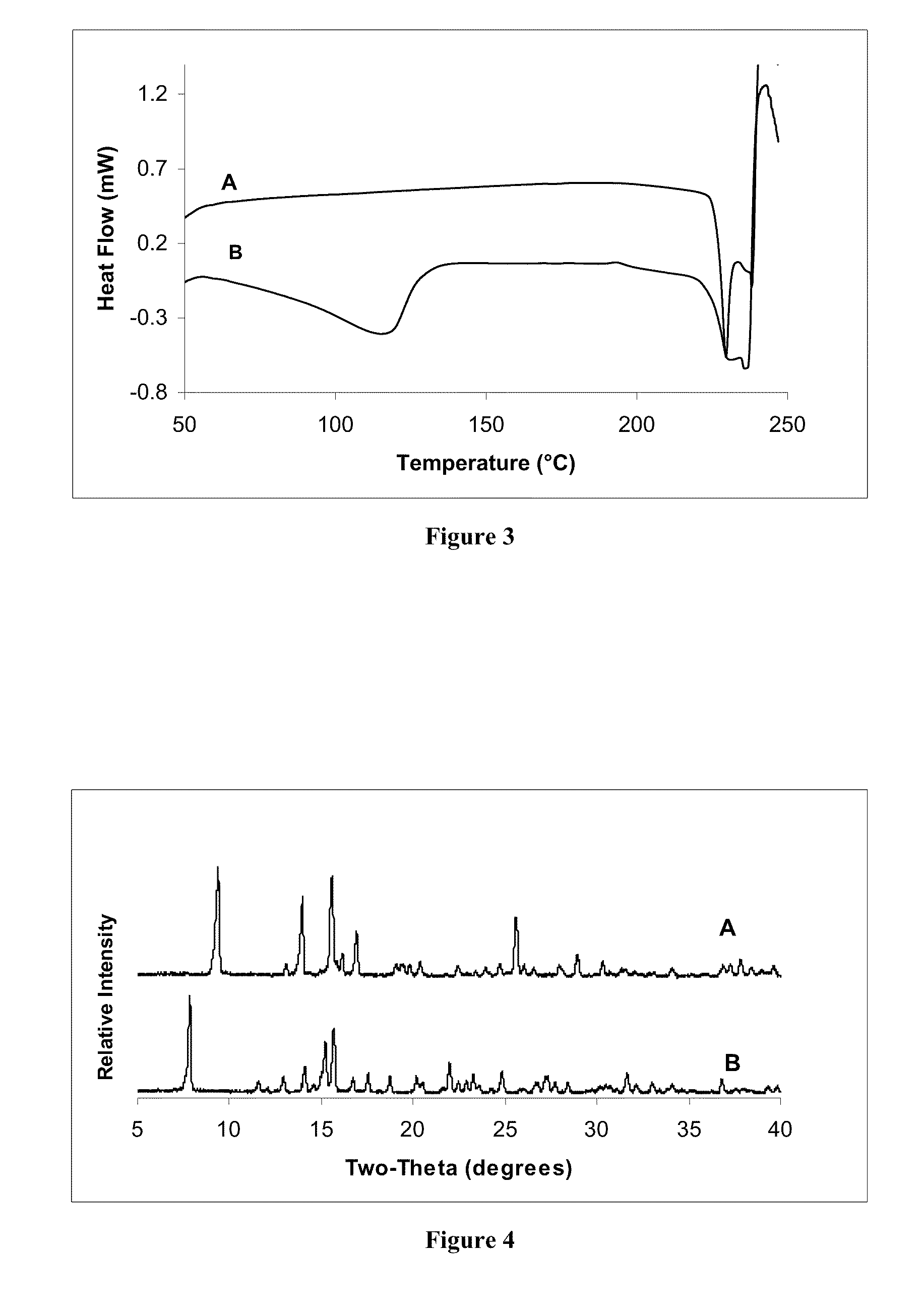Stable Corticosteroid Nanoparticulate Formulations And Methods For The Making And Use Thereof
a technology of corticosteroid nanoparticulate and formulation, which is applied in the field of stable corticosteroid nanoparticulate formulation, can solve the problems of unreliable local or systemic activity unfavorable absorption of poorly soluble drugs, so as to reduce the symptoms of the disease, relieve the disorder, and relieve the condition
- Summary
- Abstract
- Description
- Claims
- Application Information
AI Technical Summary
Benefits of technology
Problems solved by technology
Method used
Image
Examples
example 1
Preparation of Uncomplexed Nanoparticulate Mometasone Furoate Anhydrous
[0114]Mometasone furoate (1.92 g, APAC Pharmaceutical, LLC) was slurried in a milling medium (36.1 g) containing 5% HPMC, 0.1% SLS and ca 30 ppm of simethicone for ca 1 h. The fully dispersed slurry was slowly poured into a grinding bottle containing 75.6 mL of polystyrene PB-4 beads (0.15-0.25 mm, GlenMills). The content in the bottle was agitated by hand-turning the stir shaft to ensure complete wetting of the beads and removal of air trapped in the beads. The grinding bottle was then tightly closed and fitted into a larger plastic bottle (cooling bottle) filled with ice-water. The cooling bottle was then mounted onto a blender (Hamilton Beach Commercial) for grinding. The blender was operated at low power setting in an on-off fashion (on for 1 min and off for 2 min) to avoid overheating. The grinding process was monitored by particle size measurement using a Horiba LA-910 particle size analyzer (Irvine, Calif....
example 2
Preparation of a Complexed Mometasone Furoate Anhydrous Nanoparticulate Suspension
[0115]The mometasone furoate nanoparticulate suspension of Example 1 (1g) was diluted with deionized water (9 g) followed addition of methylparaben sodium (11.5 mg). The resultant suspension was shaken to mix well. Citric acid anhydrous (12.7 mg) was then added to achieve 0.1% methylparaben (w / w) and pH4. The mometasone furoate concentration was approximately 0.5% w / w. The suspension was kept at ambient for particle size to stabilize (Table 2).
TABLE 2Table 2: D50 values of Mometasone furoate nanosuspension inthe presence of methylparaben sodium and citric acidD50 (μm)Days at ambientNo sonication1 min sonication00.110.1140.1360.13750.1380.13870.1350.135110.1620.154630.1480.148
example 3
Stability of Complexed Mometasone Furoate Nanoparticulate Suspension Versus the Uncomplexed Suspension when Dispersed in Simulated Nasal Fluid (SNF) at 37° C.
[0116]The uncomplexed mometasone suspension of Example 1 was diluted 10-fold with deionized water and 1 gm of the resulting suspension was diluted another 10-fold (addition of 9 gm deioinzed water). The complexed mometasone nanaoparticulate suspension of Example 2 (1g) and deionized water (9 g each) were mixed to obtain mometasone furoate nanosuspensions at pharmacologically relevant concentrations (approximately 0.05% w / w mometasone furoate). The two suspensions were incubated side by side in SNF at a concentration of ca 0.25 mg / mL at 37° C. The particle size distribution curves of the complexed and uncomplexed mometasone furoate nanosuspensions after 15 and 30 min incubation in simulated nasal fluid are shown in FIG. 1 and FIG. 2, respectively. D50 values before and after incubation are shown in Table 3. As demonstrated by th...
PUM
| Property | Measurement | Unit |
|---|---|---|
| volume weighted median diameter | aaaaa | aaaaa |
| particle size | aaaaa | aaaaa |
| size | aaaaa | aaaaa |
Abstract
Description
Claims
Application Information
 Login to View More
Login to View More - R&D
- Intellectual Property
- Life Sciences
- Materials
- Tech Scout
- Unparalleled Data Quality
- Higher Quality Content
- 60% Fewer Hallucinations
Browse by: Latest US Patents, China's latest patents, Technical Efficacy Thesaurus, Application Domain, Technology Topic, Popular Technical Reports.
© 2025 PatSnap. All rights reserved.Legal|Privacy policy|Modern Slavery Act Transparency Statement|Sitemap|About US| Contact US: help@patsnap.com



